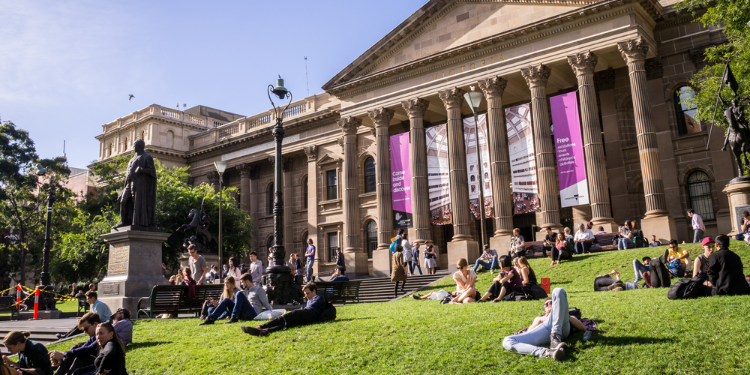
Staff shortages, combined with budgetary cuts, have even directly affected the smooth running of immigration procedures at the Department of Home Affairs. There is currently a backlog of over 15,000 visas, including international student visas for those who want to move to Australia to study.
A long, inefficient student visa application process is a strong deterrent to studying in Australia. While the Home Office states an average of 4-6 weeks to obtain a student visa, the bureaucratic backlog in 2022 makes students obtain their visa only 10 weeks to 3 months after applying. Some graduate students from India and Iran even reported a student visa wait time of 2 years.
This delay forced some international students to defer their enrolment by a semester or year as they missed their academic start dates or even withdraw and re-apply in other countries. In addition, immigration services have recently had to deal with various document frauds caused by travel agents in India, which has further overwhelmed the understaffed department.
Andrew Giles, the Minister for Immigration, Citizenship, Migrant Services and Multicultural Affairs, has committed to rethink visa policy options and allocate sufficient resources to clear the student visa backlog before the next academic year. Prime Minister Antony Albanese has stressed that short-term migration will be an integral part of the solution to the nationwide skilled labor shortage. According to Minister Giles, preventing the brain drain of the best international talent to competitor countries will ensure that Australia remains "the world's most successful multicultural society."
An overview of the international student population in Australia
Australia is among the Top 5 study destinations around the world for international students. Australian education is highly sought after not only because of the reputation of local institutions, which include seven research universities listed in the QS World University Rankings 2023 but also because of the availability of international scholarships and the strong multiculturalism of the country.
According to the Department of Education, Skills and Employment statistics, in 2019, a year prior to the Covid-19 pandemic, there were 178,000 international students enrolled in an academic course and an additional 170,000 in a VET (Vocational Education and Training) course. New South Wales, the southeastern state home to Sydney, has consistently had the most significant proportion of international students.
However, international student enrolments in Australia fell sharply in the last 2.5 years of the pandemic. According to the ICEF Monitor, the inflow of international students fell by 7% in 2020 and a further 17% in 2021 as the country closed its borders to overseas students. This has meant a loss of national revenue from the tuition fees of international students as well as a shortage of skilled workers across many sectors.
Under the leadership of newly elected Prime Minister Anthony Albanese and immigration minister Andrew Giles, the Australian government has prioritized attracting international students and speeding up the processing of backlogged student visas.
The economic recovery of Australian universities
Australia's earnings from the international education sector have increased steadily since the mid-1990s. According to the organization Universities Australia, it reached an all-time high of $41 billion in 2018. Education is among the top four export earners of the economy, sustaining nearly 260,000 jobs from the revenue it generates.
The business model of Australian courses relies on the high tuition fees that international students pay; these fees can be twice as high as domestic fees. In addition, international students contribute to the economy in other ways, through their living expenses (rent, health insurance, food, leisure) and by doing part-time jobs, including as research assistants.
As the Covid-19 pandemic forced the Australian government to prioritize health and safety, the country closed its international borders and stopped processing all student visas in March 2020. Many international students were only allowed to enter or return nearly two years later, in December 2021 or February 2022, when the borders reopened fully. Many students in Australia also felt the government failed to provide information that was clear enough about reopening times.
For the first time in nearly thirty years, multiple Australian universities reported a revenue deficit, fifteen out of thirty-eight in a survey by Victoria University. Only the three most prestigious universities, Monash University, the University of Melbourne and the University of Sydney, made significant surpluses in 2020. The lucrative ELICOS (English language courses) sector also shrank by 47% during the pandemic.
According to the Australia Institute, one-fifth of workers in the higher education sector (40,000 people) were laid off in this crisis. The economic recovery of the international education sector is crucial for these workers to recover their jobs.
Increasing and diversifying international student enrolments
If Australia does not bring its international student enrolments back to pre-pandemic levels, it soon risks falling behind competitors in the higher education sector like Canada, the UK and the US. These countries remained more or less open to international students despite other border restrictions. For example, the UK never barred international students from entry despite the law requiring them to quarantine and provide evidence of vaccination or a negative PCR test. Case in point, the MONEF Monitor attests that the UK issued a record-high number of student visas in 2021, the second year of the pandemic.
The largest number of international students in Australia in 2019 came from China (37.3%), followed by India, Nepal, Brazil and Vietnam. Students from China have been slow to return in 2022, partly due to a limited number of flights between their home country and Australia. The government of Australia has recently implemented incentives like visa fee rebates and no limits on the number of hours one can work on a student visa, but in April 2022, enrolment from China is still 40% down from 2019 levels.
Many institutions expect to have the same number of students as in February 2019 only by February 2024. As a result, higher education providers are changing their strategy to attract students beyond the Chinese market to study in Australia. A new, fast-growing target market for international students is South Korea.
Another barrier is cost. Course fees in Australia are among the highest in the world. Undergraduate tuition for international students, which varies depending on the specific universities and courses, ranges between $20,000 and $45,000 per year. As a result, many new international students from middle-class backgrounds, economically affected by the pandemic, are now opting for other countries with lower fees like Ireland, Portugal and Greece.
The government of Australia has increased financial aid packages to international students to overcome this financial barrier. A prime example is the Destination Australia scholarship which will provide international students with $AU15,000 of support.
Need for a highly-skilled immigrant workforce
The net drop in the inflow of international students and skilled immigrants has also exposed structural shortages of skilled labor in Australia. The Australian Bureau of Statistics reported nearly half a million unfilled vacancies in mid-2022, even as a record-high 66.7% of the adult population of Australia holds jobs.
According to a National Australia Bank survey, 85% of businesses face a skills shortage in healthcare, technology, manufacturing, tourism and hospitality, and trade sectors. New South Wales, the most populous state of Australia, faces of shortage of qualified teachers, and regional areas are faced with a worsening of their 10-year shortage of nurses.
In this landscape, the country is strategizing to make many international students not only decide to study in Australia but also want to gain employment in Australia following their graduation. In an article in The Conversation, Nancy Arthur, Dean of Research at the business school of the University of Australia, emphasized that Australia needs to offer international students a better "welcome mat".
This "welcome mat" includes removing cumbersome immigration barriers and providing students with the right support to transition smoothly from a student visa to a work visa, including English language training. They also need to be offered pay that rivals what Canada or other high education competitors provide.



















